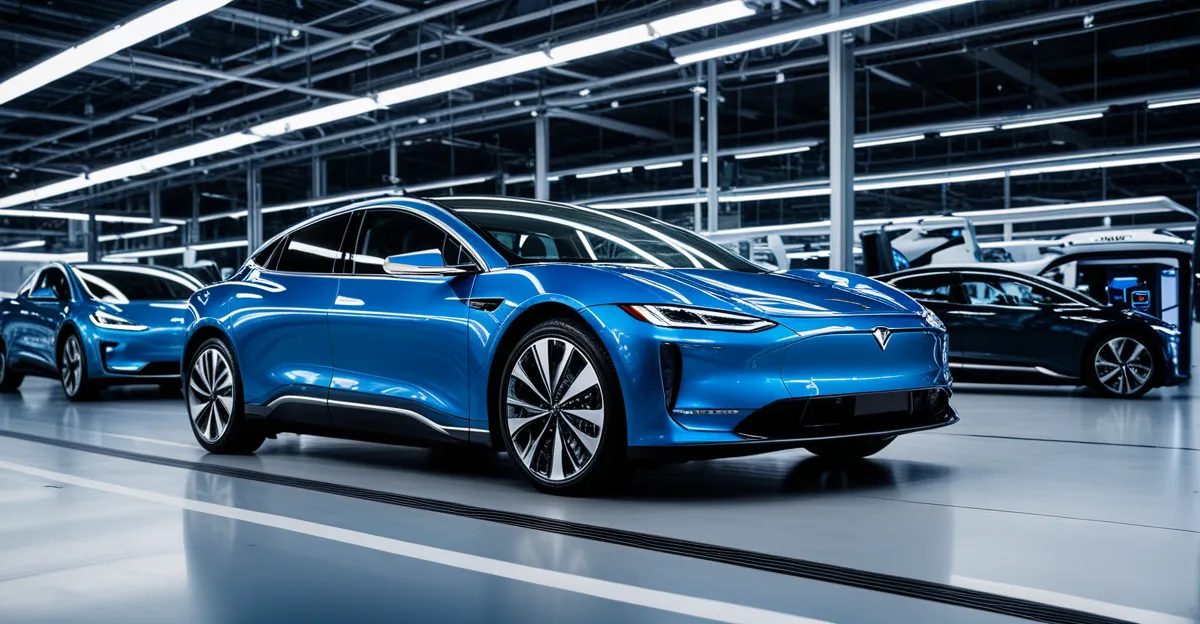Impact of Electric Vehicles on Automotive Manufacturing
Electric vehicle manufacturing has triggered a profound production transformation within the automotive industry. Traditional vehicle assembly lines, once optimized for internal combustion engines, are evolving to accommodate the distinct requirements of electric vehicles. This shift demands new materials such as lightweight composites and high-strength alloys, which improve efficiency and battery performance. Moreover, assembly techniques are adapting to integrate complex electric drivetrains and battery packs, diverging significantly from conventional manufacturing processes.
The automotive industry change extends to supply chains, which must adapt to sourcing specialized components like lithium-ion cells, power electronics, and electric motors. These components require new supplier relationships and logistical strategies, causing a ripple effect throughout the supply network. Established automakers face the challenge of retooling factories to manage electric vehicle manufacturing at scale, while supply networks become more diversified and technology-driven.
Have you seen this : What Future Technologies Will Drive the UK Automotive Industry?
Traditional automakers also experience pressure to innovate rapidly to remain competitive. Their reliance on legacy parts suppliers and conventional manufacturing methods is giving way to partnerships with technology firms and battery specialists. This restructuring fosters an ecosystem more focused on sustainability, efficiency, and advanced engineering, positioning electric vehicle manufacturing as a catalyst for a broader automotive industry metamorphosis.
Technological Innovation Driven by Electric Vehicles
Electric vehicle manufacturing has become a powerful engine for automotive innovation, reshaping research and development priorities. A key driver of this transformation is continuous battery advancements. Improvements in battery chemistry and design have led to increased energy density, enabling electric vehicles to achieve longer driving ranges and faster charging times. These progressions directly enhance the appeal and practicality of electric vehicles, underpinning the industry-wide push for wider adoption.
This might interest you : How Has Climate Awareness Shaped the Future of the UK Automotive Industry?
Beyond battery performance, EV technology integrates smart and connected vehicle features more seamlessly than traditional vehicles. These include advanced driver-assistance systems, over-the-air software updates, and vehicle-to-grid communication capabilities. Such integration not only improves safety and convenience but also facilitates new business models centered on software and data services, signaling a shift in how value is created within the automotive sector.
The impact on research and development is profound. Engineering teams now prioritize multi-disciplinary collaboration that merges software, hardware, and chemical expertise. This convergence accelerates innovation cycles and demands flexible manufacturing approaches to accommodate rapid technological change. The cumulative effect is a dynamic ecosystem where EV technology continually pushes the boundaries of what automotive manufacturing can achieve, driving a decisive production transformation throughout the sector.
Environmental and Sustainability Benefits
Electric vehicle manufacturing drives significant EV sustainability gains, chiefly through a marked emissions reduction. Electric vehicles produce zero tailpipe emissions, directly cutting greenhouse gases and urban air pollutants compared to traditional combustion engines. This decrease in harmful emissions supports improved air quality, mitigating respiratory and cardiovascular health risks common in densely populated areas. The eco-friendly transportation aspects of EVs thus play a vital role not only in individual health outcomes but also in broader urban environmental resilience.
How does EV sustainability impact global climate goals? Precisely, the widespread adoption of electric vehicles reduces the transportation sector’s carbon footprint, which accounts for a substantial share of global emissions. This transition aligns with international climate agreements aiming to limit temperature rise by lowering fossil fuel dependence. In addition to curbing direct emissions, EV manufacturing increasingly incorporates sustainable materials and energy-efficient production methods, reinforcing environmental benefits throughout the vehicle lifecycle.
Furthermore, the role of electric vehicles in eco-friendly transportation extends to reducing noise pollution and dependency on fossil fuels, fostering more livable cities. As urban centers grow, the environmental advantages of EVs contribute to healthier, more sustainable communities. Consequently, electric vehicle manufacturing not only supports an automotive industry change but also stands as a cornerstone in achieving long-term environmental sustainability objectives.
Evolving Market Trends and Consumer Preferences
Electric vehicle manufacturing is intricately linked to EV market trends that shape the automotive sales landscape globally. Recent years have witnessed a significant growth in EV sales, fueled by increasing consumer awareness and evolving preferences toward sustainable transportation. Consumers are no longer solely focused on traditional vehicle attributes like horsepower or fuel economy; they increasingly value factors such as environmental impact, connectivity, and long-term cost savings. This shift in consumer adoption is a core driver of the ongoing automotive industry change.
Government incentives and policies play a pivotal role in accelerating EV adoption. Subsidies, tax credits, and stricter emission regulations have made electric vehicles more financially accessible and attractive to a broader customer base. Affordability remains a key concern for many potential buyers, but as battery costs decrease and production scales up, price competitiveness improves, further influencing EV market trends positively.
Consumer attitudes reflect a growing trust in electric vehicles’ reliability and performance. Surveys indicate an increased willingness to switch from internal combustion engines to electric drivetrains, spurred by advances in range and charging convenience. This acceptance is crucial for continued production transformation, as manufacturers align their portfolios with the rising demand for electric models.
Together, these dynamics create a feedback loop: rising consumer adoption encourages automakers to expand EV offerings, which in turn drives further shifts in automotive sales and market penetration. Understanding these nuanced trends helps industry stakeholders target production and marketing strategies effectively.
Charging Infrastructure and Regulatory Changes
Electric vehicle adoption hinges considerably on the development of robust EV charging infrastructure, which addresses critical consumer concerns about range and convenience. The expansion of charging networks involves deploying various types of chargers: from fast DC chargers along highways to slower AC chargers in residential areas. This diversity ensures accessibility for differing user needs, encouraging broader consumer adoption. Furthermore, technological standards for chargers are evolving to improve interoperability and reduce charging times, which directly influences the practicality and appeal of electric vehicles.
Government policies play a decisive role in accelerating this infrastructure growth. Through regulatory frameworks, many countries provide automotive regulations that mandate the installation of public chargers in new developments and support incentives for private charging stations. Such public policy measures lower barriers to infrastructure investment while aligning with broader environmental and transportation goals. In addition, subsidies and grants ease the financial burden on stakeholders, catalyzing infrastructure rollout in both urban and rural regions.
However, challenges remain in scaling infrastructure to meet rising demand. Grid capacity constraints, high installation costs, and inconsistent regulatory environments pose obstacles to widespread deployment. Despite these hurdles, the ongoing collaboration between governments, utilities, and manufacturers presents significant opportunities for innovation and integration. As a result, the expansion of EV charging infrastructure and evolving automotive regulations together facilitate a comprehensive ecosystem supporting the sustainable growth of electric vehicles worldwide.
Case Studies: Real-World Examples of Industry Transformation
Examining automotive case studies reveals how electric vehicle manufacturing drives profound industry transformations. Major traditional automakers, such as those with longstanding combustion engine legacies, have strategically pivoted their production lines toward electric models. This shift involves significant investments in retooling factories, training workforces, and establishing new supplier networks tailored to EV components. Such changes illustrate a tangible production transformation, underscoring the industry’s response to evolving technological and market demands.
Emerging EV adoption examples include innovative startups that challenge established players by focusing exclusively on electric vehicles. These companies leverage agile manufacturing techniques and cutting-edge battery advancements to rapidly develop and market EVs, exerting competitive pressure on legacy automakers. Their success stories showcase how nimble innovation fosters disruptive change within the broader automotive ecosystem.
Regional case studies further highlight successful integration strategies. In areas with supportive public policy and robust charging infrastructure, automakers experience accelerated EV market penetration. Collaboration between local governments and industry stakeholders fosters favorable conditions for scaling EV production and adoption. These real-world examples collectively demonstrate how interlinked technological, regulatory, and market factors underpin the ongoing automotive industry change driven by electric vehicles.








